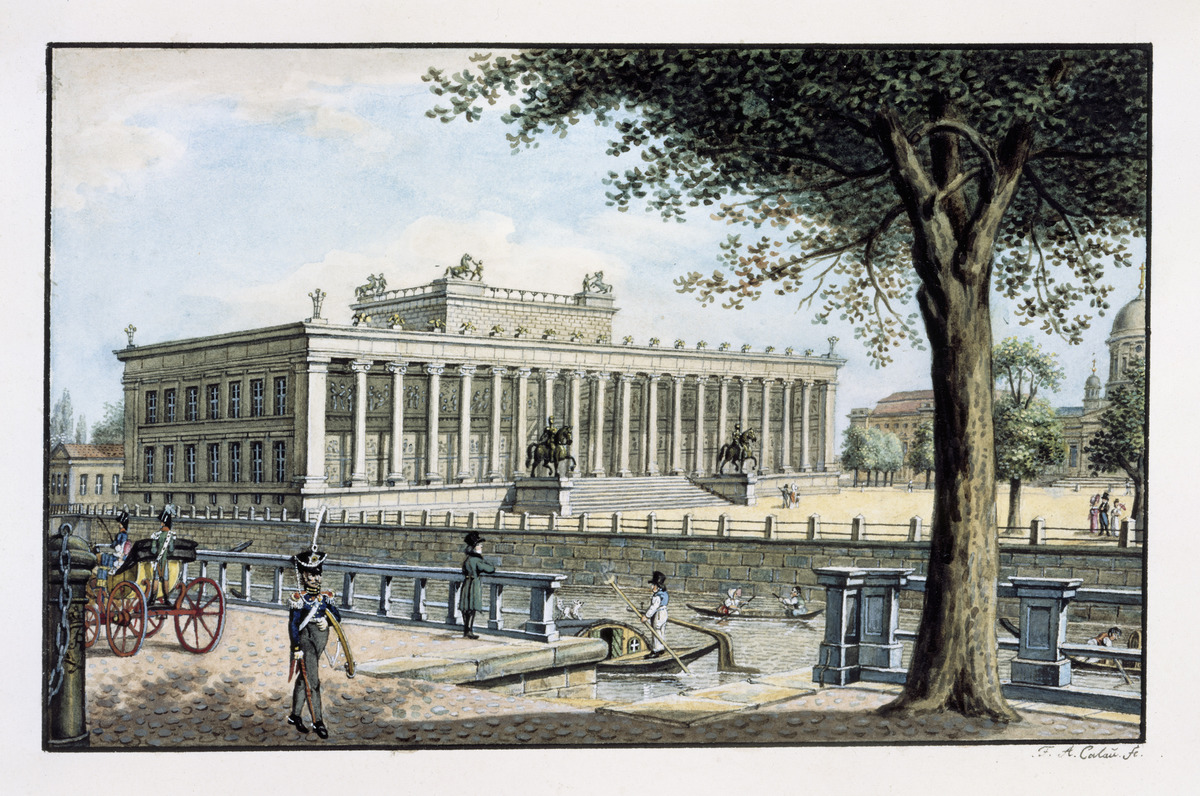Source

Source: bpk-Bildagentur, image number 00013495. For rights inquiries, please contact Art Resource at requests@artres.com (North America) or bpk-Bildagentur at kontakt@bpk-bildagentur.de (for all other countries).
Karl Friedrich Schinkel (1781–1841) was doubtless the most important German architect of his era. He left his mark in particular on the Prussian capital, Berlin, where his signature masterpieces: the Neue Wache (New Guardhouse) (1816–18), the Schauspielhaus (Theater) (1821), and the Altes Museum (Old Museum) (1825–28) continue to define the grand scale of Berlin’s great promenades, Unter den Linden and Friedrichstrasse. After the trauma of the Napoleonic wars, Berlin blossomed as a center of learning and culture under the uneasy eye of King Friedrich Wilhelm III (1770–1840). The presence of leading philosophers and scholars, such as Georg Wilhelm Friedrich Hegel (1770–1831) and Wilhelm (1767–1835) and Alexander von Humboldt (1769–1859), truly made the city an “Athens on the Spree” (as it had already been called under Friedrich I), and Schinkel’s temples of culture in the Greek revival style appropriately literalized the comparison. The Schauspielhaus and the Altes Museum were meant to inspire reverence for German drama and the works of art in the royal collection, in the hopes of demonstrating the civilizing effects of art upon the nation. The museum is, in fact, one of the first buildings designed for the public display of artworks arranged by period and medium. The belief that art could lead to edification was shared by Enlightenment and Romantic thinkers alike, and although Schinkel participated in the Romantic enthusiasm for neo-Gothic forms—which were regarded as an expression of the German national psyche—he never abandoned his classical roots. Drawing, pen and ink, opaque colors (c. 1825) by Friedrich August Calau (c. 1790–1830). Architect: Karl Friedrich Schinkel (1824–29).

Source: bpk-Bildagentur, image number 00013495. For rights inquiries, please contact Art Resource at requests@artres.com (North America) or bpk-Bildagentur at kontakt@bpk-bildagentur.de (for all other countries).
© bpk / Kupferstichkabinett, SMB / Jörg P. Anders